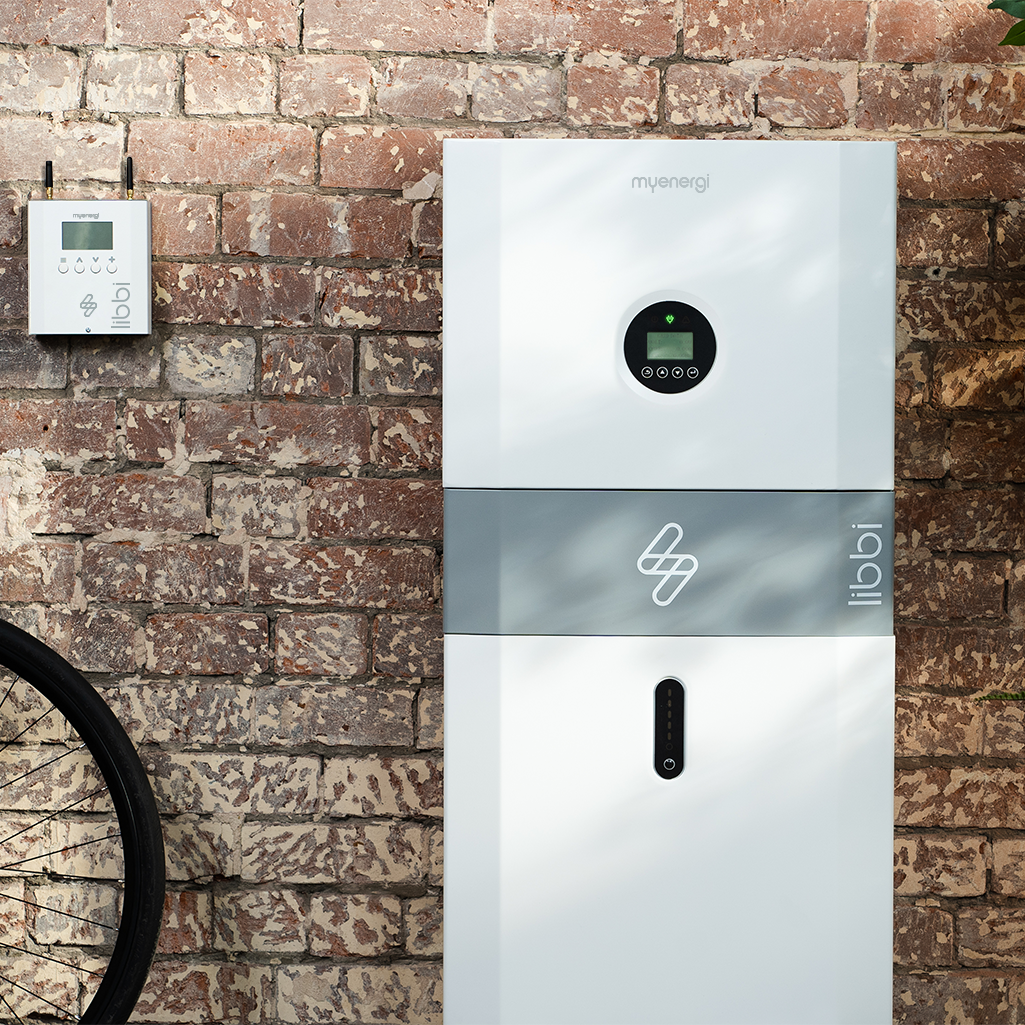Unlocking the truth: 5 home battery storage questions everyone’s asking
In the electrifying realm of renewable energy, there’s a rising star that’s capturing the curiosity of homeowners worldwide: home battery storage. As we collectively embark on the journey towards a greener future, understanding this game-changing technology becomes pivotal. In 2023, myenergi launched libbi; a modular home battery storage system. Capable of storing energy from both the grid and renewable sources, libbi was the next obvious addition to the myenergi ecosystem. But from cost implications to environmental impacts, the buzz around home battery storage is filled with inquiries.
Dive in as we demystify the top five most asked questions, shedding light on the answers that might just reshape the way you perceive energy at home.
1. What’s the lifespan of a home battery storage system?
As with any investment, a potential home battery system owner would be left questioning the longevity of the device. There are a number of factors that come into play when discussing how long a home battery storage system will last, but most importantly; the manufacturer of the storage system itself.
The key factors determining battery lifespan:

The libbi battery storage system’s lifespan
Delving into specifics, the libbi battery storage system has garnered attention for its durability and efficiency. Designed with advanced battery technology, it is engineered to offer a higher number of charge cycles and optimal performance over an extended period. Moreover, with proper maintenance and usage, homeowners can potentially maximise the lifespan of a libbi battery beyond its 10 year warranty period.
The lifespan of a home battery storage system is contingent on a myriad of factors. However, with evolving technology, systems like the libbi battery storage are pushing the boundaries, offering homeowners extended periods of efficient energy storage. As we embrace a sustainable future, understanding and optimising these lifespans becomes not just beneficial, but essential.
Find out more2. How do you choose the right size and capacity for your home battery?
Home battery storage systems bridge the gap between energy production and consumption, ensuring a steady flow of power even when the sun isn’t shining or the wind isn’t blowing. However, one of the pivotal decisions homeowners face is determining the right size and capacity for their home battery. Choosing wisely can mean the difference between uninterrupted power and frequent blackouts.
Understand your energy needs:

The power of consultation
While these guidelines provide a starting point to calculate the size of your battery requirements, consulting with professionals is invaluable. Energy experts can conduct a detailed audit, factor in seasonal variations, and offer precise recommendations.
Selecting the right size and capacity for your home battery is a blend of current analysis and future forecasting. The ultimate aim is to strike a balance, ensuring you have a reliable power source tailored to your unique energy needs without overspending on unnecessary capacity. Remember, in the world of home energy storage, bigger isn’t always better—it’s about finding the perfect fit.
Get in touch3. How much can you save with a home battery storage system?
While the environmental benefits of battery storage are clear, a pressing question on many minds is: What are the monetary savings? Let’s break down the financial advantages of having a home battery storage system.
Immediate savings on energy bills:

Get a clear picture of the potential savings
To get a clear picture of your potential savings, first review your past electricity bills to understand your consumption patterns. Secondly, research your local electricity rates, especially any time-of-use rates.
Thirdly, consider your solar energy generation (if applicable) and the storage capacity of your battery.
The final step is to use online calculators or consult with professionals to get a detailed breakdown, or contact myenergi for a breakdown.
Chat to us4. Will home battery storage increase the value of my property?
The property market is continuously evolving, with buyers’ preferences shifting towards more sustainable and efficient homes. In this context, home battery storage systems, a complement to renewable energy sources like solar panels, have become a focal point. But do they genuinely add value to your property?
5. Can home batteries help you go off the grid completely?
The allure of self-sufficiency is undeniable. With rising energy costs and the undeniable impact of fossil fuels on the environment, more people are considering the idea of “going off the grid.” Home batteries, combined with renewable energy sources, seem like the ticket to this dream. But can they genuinely enable a complete and comfortable disconnect from the utility grid? Let’s explore.
Moving towards an off-grid transition
Before considering going off-grid, it’s crucial to make your home as energy-efficient as possible. This means investing in energy-efficient appliances, insulation, LED lighting, and more. The less energy you need, the more feasible going off the grid becomes. A factor of this will also depend on the size of your property, some homes are just too large to power off grid as batteries, even in modular form such as libbi, just wouldn’t have enough storage capacity to meet the property’s energy demands.
Even with the best planning, there might be periods where your renewable sources and batteries aren’t enough. Consider backup solutions, such as generators, for emergencies.
While home batteries are a significant leap towards off-grid living, the complete transition requires thorough planning, investment, and commitment. It’s not just about disconnecting from the grid but building a sustainable, self-sufficient energy ecosystem. Which will take sacrifice. With advances in renewable energy and battery technology, the dream of going off-grid is becoming more attainable – but, as with any dream, it demands careful thought and action.

 libbi
libbi